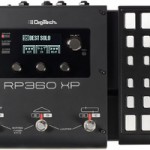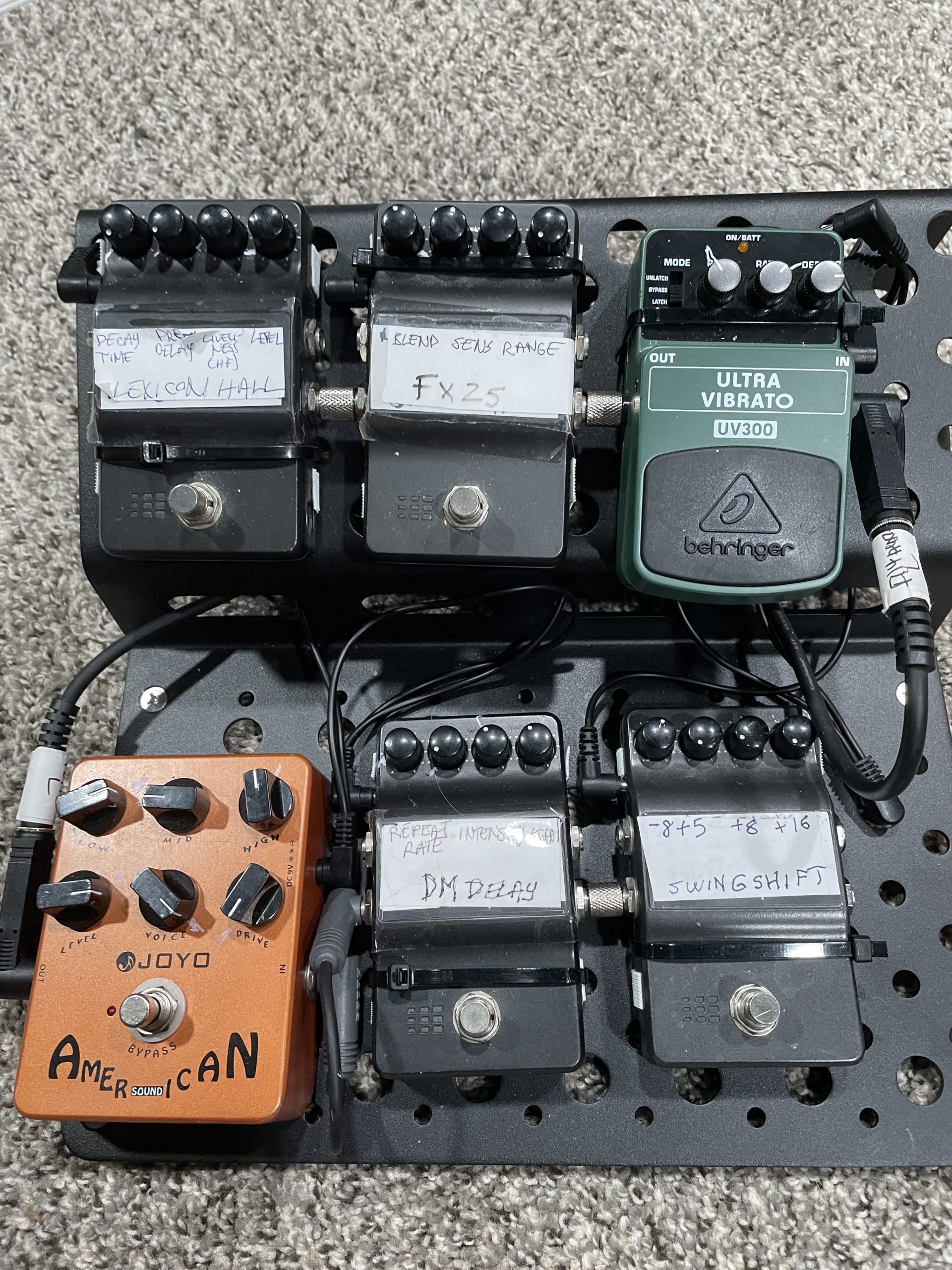
Digitech Leaks A Little News About the Upcoming RP360(XP)
I just saw this Audio Fanzine article on the upcoming Digitech RP360 and RP360XP. Here are a few first impressions.
First, the number of amp, cab, and FX models is exactly the same as it is for the current RP355. It’s possible that they are in fact the same; we don’t know yet if this device uses something different than the AudioDNA2 chip that powers the RP150/155/250/255/350/355/500/1000. UPDATE 9 December 2013: Digitech tech support has confirmed that the RP360/360XP is based on the AudioDNA2 chip.
What’s obviously different is the user interface. The rows of lights and dials that have been common to RPs since the first days of the RP100/200/300 have been replaced with an LED display that’s more like the Zoom G3, where you see a horizontal row of FX devices in the order that you’ve chained them, and can turn each on or off as you choose. (UPDATE 12 December 2013: unlike the Zoom G3, you won’t be able to chain multiple modulation FX–pitch shift, chorus, flange, etc.–in a single patch, but you will be able to put your FX in any order you like, which is a welcome change from the fixed FX order of the RP355.) There are three rotary dials, which means they are probably multi-functional, but since there are only three it should be manageable. The fact that there are fewer rotary encoders than there are on the RP255 and up means that there’s also less real-time control from the front panel, but I wonder whether many RP users actually use all the real-time control that they’ve got.
Another difference is that the XLR outs from the RP355 have been dropped–it’s 1/4″ I/O all the way, mono or stereo. I suppose most RP355 users never used the XLR outs, especially since the implementation was so odd–no mono XLR out? I doubt most RP355 users upgrading to the RP360 will care. I won’t.
The RP360 uses metal footswitches instead of the plastic footpads that are another RP tradition. This is clearly a change for the better, and will allow for much more precise control over patches in performance. However, Digitech still uses the two-button-at-a-time approach to start or stop certain functions, one of which appears to be the looper. We’ll have to see how that works. Ideally you just use the two switches to put the device in looper mode, not to actually start the looper. If you have to hit two buttons at once to get a loop started, that’s very, very, bad. Precise timing matters with a looper; it will not be easy to hit two buttons together at precisely the right time.
Digitech is also following Zoom’s lead in offering this device with and without a footpedal controller. I would never recommend to anyone that they buy an amp modeler without a footpedal, unless it’s a backup, but if that’s what you want to do, you can. Did I mention that I would never recommend that? A footpedal controller adds a lot of expressive power to one of these devices. Don’t get a device without a footpedal if you can avoid it.
Digitech is apparently releasing new software called Nexus to support the RP360. Nexus is the name used for the app that controls their iPad-based multiFX unit, the iPB-10, so perhaps the RP360’s computer support will resemble that app.
That’s all we know for now; stay tuned for more info as it becomes available. Note also that the current generation of Digitech devices are really great-sounding devices, especially when they’re equipped with our patch set for Digitech RP, and that’s not going to change because of the RP360 etc. (UPDATE 9 December 2013: given that the RP360/360XP runs the AudioDNA2 chip, just like the other RPs, it’s very likely that it will sound very much the same.) It’s likely that big deals will be available soon on remaining Digitech RP155/255/355 inventory, so if you’re thinking about buying, wait a little while.
You can also check out an interesting discussion of the RP360 at TheStompBox.net if you’re so inclined.
Related Posts
8 Comments
Leave a Reply
You must be logged in to post a comment.
WHAT’S NEW
Categories
- Audio/Video
- Blog
- Blue Future
- Digitech RP Tricks and Tips
- Discography, CDs, Projects, Info, Notes
- Featured Video
- For the Beginner
- Gallery
- Hunter's Effects
- Hunter's Music
- Huntersounds for Fender Mustang
- Meet the Pros
- More Video
- MPH: Maw/Preston/Hunter
- My Three Big Contributions
- Player's Resources
- Pro Tips & Techniques
- Recommended Artists & Recordings
- Recommended Gear
- Recorded Performances
- Reviews, Interviews, Testimonials
- The Lucky One
- Uncategorized
- Upcoming Performances
- Zoom G3 Tips and Tricks


If its the same chip, I will shure remain at my RP500 with patch 17.
That’s my plan too. (You mean the v17 patch set, not the 17th patch in the set, right?)
I hope it will have tap tempo with USB BUS power.
Tap tempo yes, USB bus power no.
It takes a lot of juice to run one of these devices, and a USB bus doesn’t have much juice in it.
Richard, well Zoom G3 runs on USB power and it seems to be pretty much equal to the RP360.
The G3 also runs on batteries, which the RP doesn’t. However, I don’t recall that it runs purely on USB power, and if it did, it would only be for purposes of recording, i.e. as an audio interface to a computer. As to whether the devices are equal, hmmm… I would describe the basic quality of FX as better on the RP, with the nod going to the G3 for flexibility in sound design (because the order of FX types is fixed on the RP, but not on the Zoom).
Guys, hello from Bulgaria! I love Digitech and i hate Digitech. Why? They created good RP series. And now they just create COSMETIC changes in the new rp like x55 and 360. The sounds are the SAME – becauce the DNA 2 is the same core. So the adwantages are the same (great amp sims and effects) as well as the negatives – like not so good distortions and power drives.
JMO
Cheers
Ted
The 360 has one important change: you can run the FX in any order you like. That makes a big difference in the sounds you can get. But otherwise, yeah. The RP500 is 6 years old. In that time period Line 6 released the HD series and now the Amplifi series, not to mention various M-series FX devices. Digitech concentrated on re-packaging its FX in various boxes. On the other hand, I think their stuff offers the best price-for-performance ratio out there, and the people I work with and for love the way it sounds, so I keep using it.